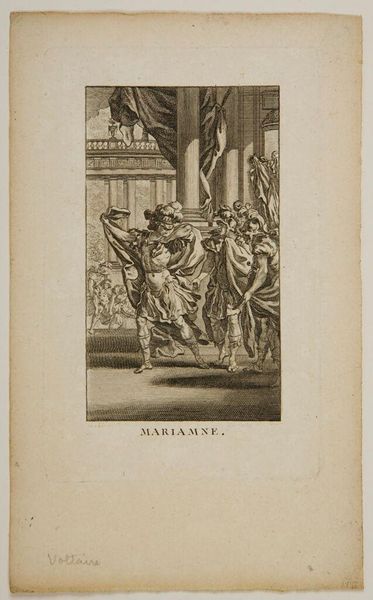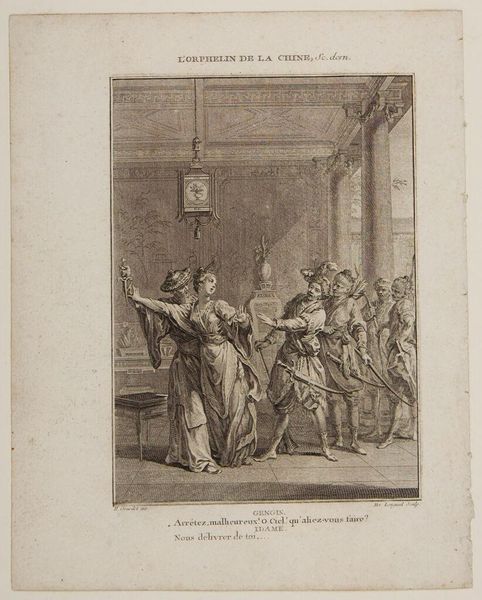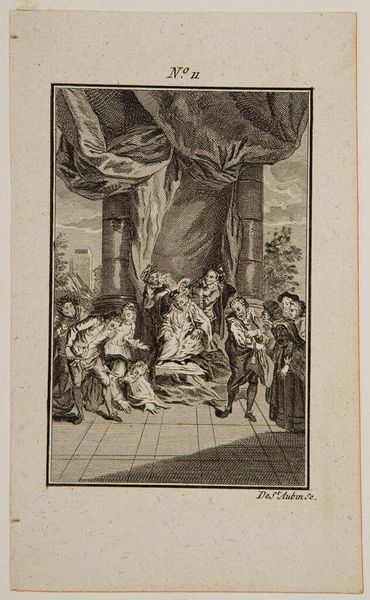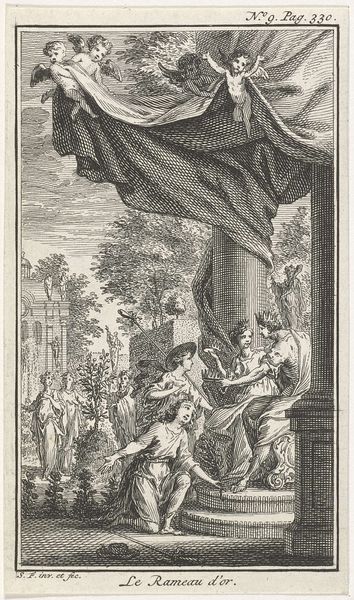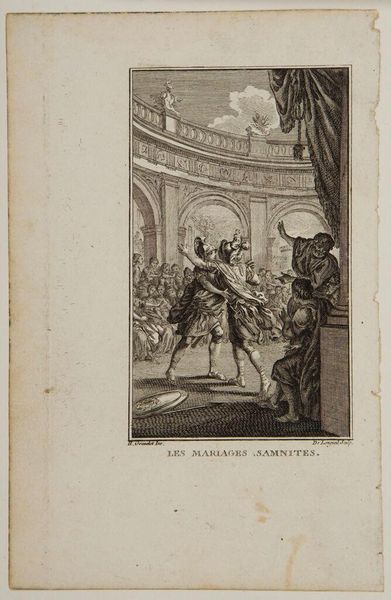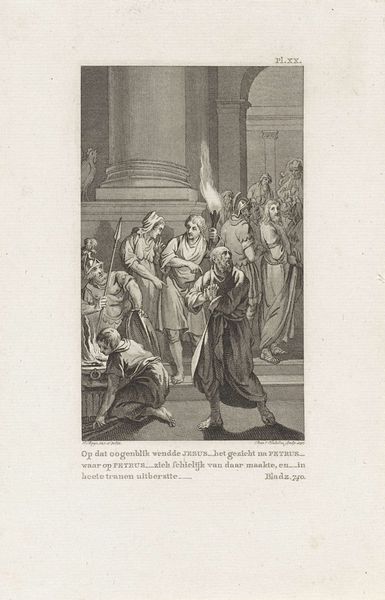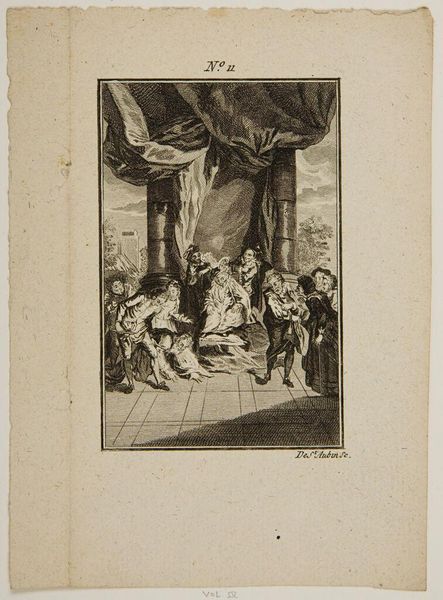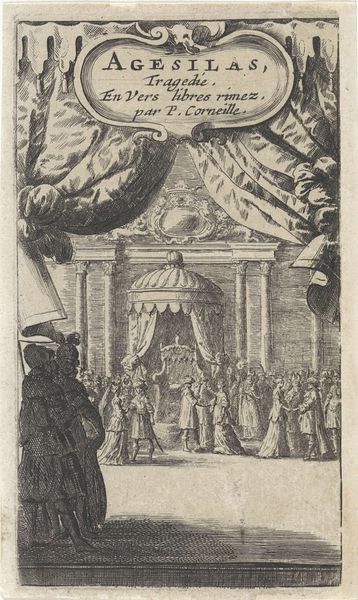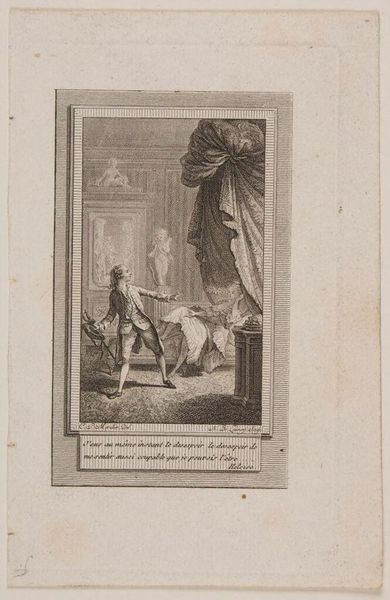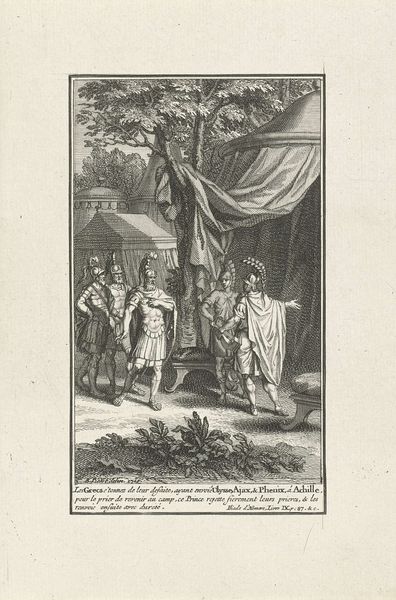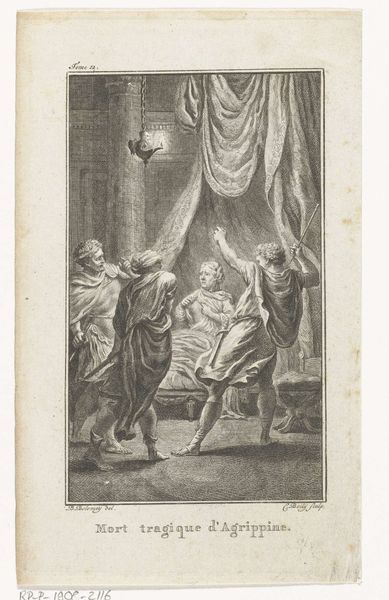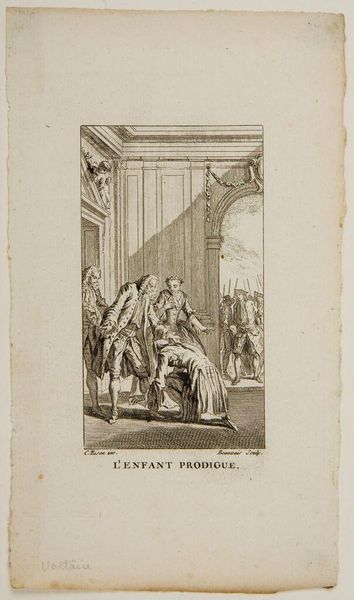
Dimensions: Image: 10.3 Ã 6 cm (4 1/16 Ã 2 3/8 in.) Plate: 13.5 Ã 8.5 cm (5 5/16 Ã 3 3/8 in.) Sheet: 17.5 Ã 10.3 cm (6 7/8 Ã 4 1/16 in.)
Copyright: CC0 1.0
Curator: Dominique Sornique's etching, "Mariamne," depicts a scene brimming with classical drama. I’m particularly drawn to its precise lines and the way it captures a moment of intense emotion. Editor: It feels heavy, doesn't it? Even in such a small format, there’s a weightiness to the architecture, the figures, the folds of fabric… almost like a stage set for a grand tragedy. Curator: Absolutely. Mariamne, of course, was a Hasmonean princess. Her story, filled with political intrigue, love, and betrayal, has resonated through centuries, especially since Voltaire put his spin on the story in his play. Editor: The stage! That's it. The figures are posed like actors, and the architecture is clearly meant to evoke a sense of power and impending doom. The drape hanging above suggests a theatrical curtain ready to fall on a tragic climax. Curator: Consider how Sornique uses shadow. It's not just about defining forms, but creating an atmosphere of suspense. The column behind the subject suggests royalty and all the political intrigue surrounding her. Editor: It’s fascinating how symbols—like those columns and draperies—persist across time and cultures. They become shorthand for complex ideas and emotions. Sornique knew how to use the visual language of his time. Curator: He certainly did. It's a small print, but it hints at much larger narratives, doesn't it? Editor: Indeed. "Mariamne" reminds us that even in miniature, art can hold immense emotional and historical weight.
Comments
No comments
Be the first to comment and join the conversation on the ultimate creative platform.
